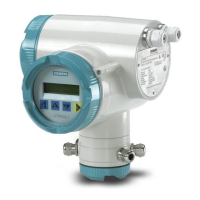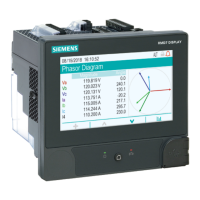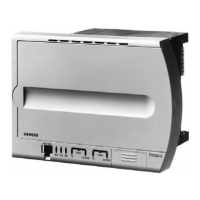Supplement 1 for Operating Instructions C79000-G52xx-C216-03
A5E02769382-03, 03/2012
7
Commissioning
General information
Commissioning of the ULTRAMAT 23 is described in section 4 of the standard operating instructions, C79000-G52xx-C216-
03. For the commissioning of the H
2
S channel, a special leak test needs to be performed, as it should be each time the H
2
S
sensor is exchanged.
Leak test of the H
2
S sensor
The leak test corresponds to that of other sample gas channels. It is most easily performed by connecting a U-tube
manometer to the sample gas inlet You can check for leaks as follows:
1. Block the sample gas outlet.
2. Create an overpressure of around 150 hPa (rel.) at the sample gas inlet.
3. Wait for about 60 seconds for the temperature of the incoming gas to be compensated.
4. Read the pressure on the manometer and note it
5. Wait a further 15 minutes and note the pressure again after this period.
6. Compare the two pressure values.
The sample gas path is sufficiently tight when the pressure has changed by no more than 5 hPa (5 mbar) over 15 minutes.
Operation
General information
Measuring mode
After power-on and a warming-up phase, the ULTRAMAT 23 a goes through an AUTOCAL. This involves synchronization of
the zero point and sensitivity of the two IR channels. When an oxygen sensor is used, its sensitivity is also compared with
ambient air with a proportion of 20.95% oxygen.
The hydrogen sulfide sensor is not adjusted during the course of this first AUTOCAL. The zero point of the H
2
S sensor is
only adjusted from the second AUTOCAL onwards.
Subsequently, the device enters the measuring mode and continuously measures.
Since a hydrogen sulphide sensor is used with this ULTRAMAT 23 model, the device can measure a maximum of 2 IR
components if an oxygen sensor is also being used at the same time.

